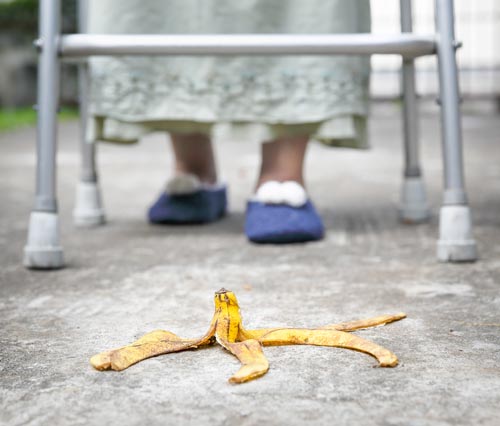Home Health Care for Seniors with Osteoporosis and Fall Risk in Bergen, Essex, Hudson, Morris, Somerset and Union Counties in New Jersey.
Osteoporosis is the loss of bone density that normally accompanies aging. As part of the routine annual physical, the doctor will order a bone density screening for all women over 65 who are at in increased risk. Elderly are at an increased risk of bone fractures and falls due to osteoporosis which leaves them vulnerable to spontaneous fractures. These are fractures where the body just seems to give way and the senior simply falls.
 Falling poses a serious risk to the elderly. According to an article published by the CDC, over one-quarter of Americans over the age of 65 fall each year, making falling the number one cause of injury, both fatal and non-fatal, in this age group. One in three seniors experiences a fall. Of those that fall, 20 percent have a serious injury, such as a broken bone or head trauma. Unfortunately, senior falls often cascade into other health issues and fatal complications.
Falling poses a serious risk to the elderly. According to an article published by the CDC, over one-quarter of Americans over the age of 65 fall each year, making falling the number one cause of injury, both fatal and non-fatal, in this age group. One in three seniors experiences a fall. Of those that fall, 20 percent have a serious injury, such as a broken bone or head trauma. Unfortunately, senior falls often cascade into other health issues and fatal complications.
According to the National Institute of Health, “falls are the number one cause of fractures, hospital admissions for trauma, loss of independence and injury deaths” among older adults in the US. The most common fractures from falls are: spine, hip, forearm, leg, ankle, pelvis, upper arm and hand. About 20-30% of those who fall suffer from hip fractures and head trauma. As well, 95% of hip fractures are caused by falls.
Falling not only poses a physical threat but also threatens the senior’s independence, self-confidence and socialization. The elderly person’s mental and physical welfare, therefore, is critically dependent on preventing a fall to begin with. The Center for Disease Control says that 1 out of 3 of those aged 65 and older fall every year and people 75 and older who fall are four to five times more likely to be admitted to a long term care facility for a year or more.
Things to do to prevent falls include:
